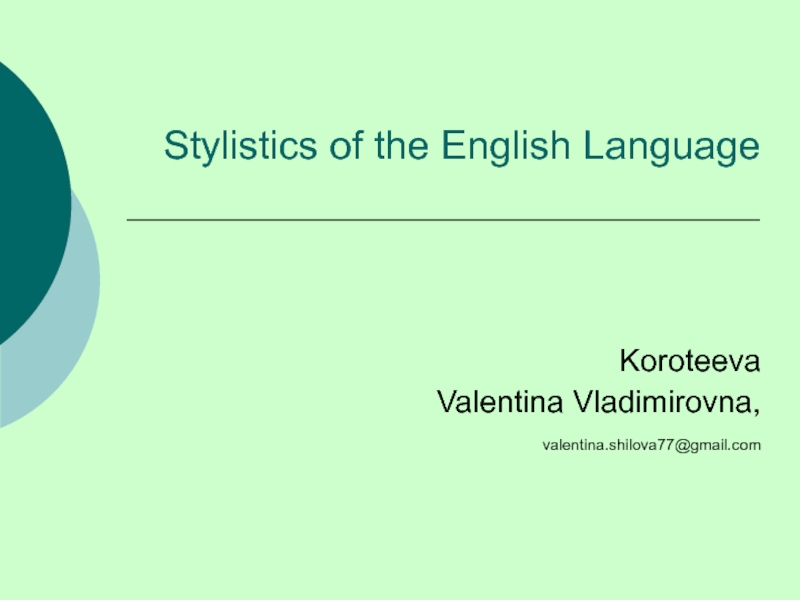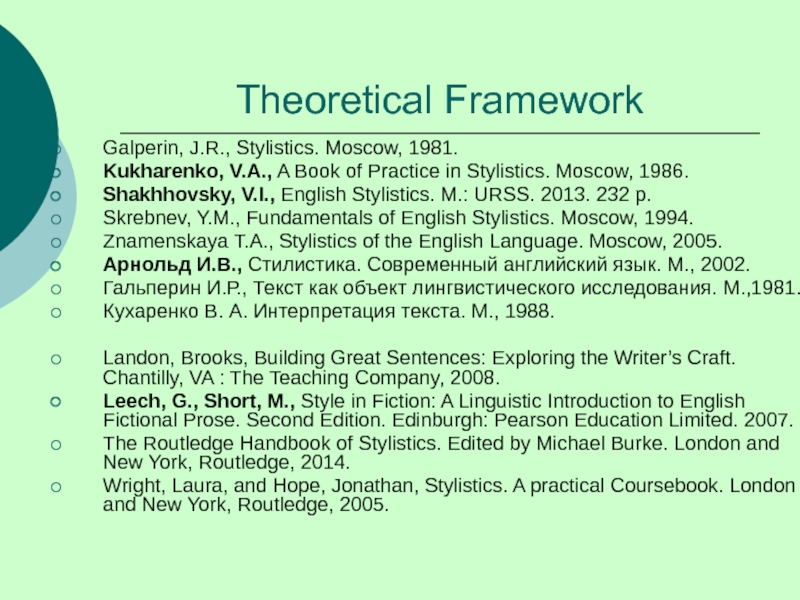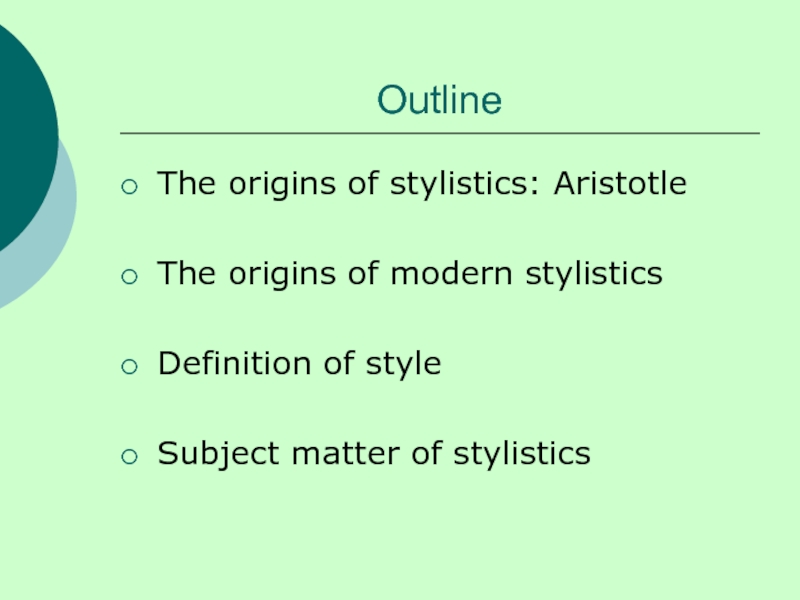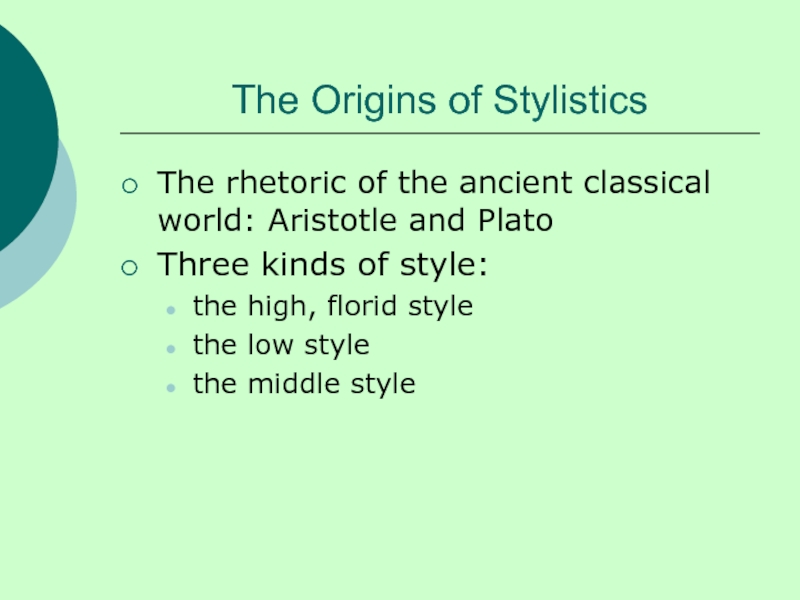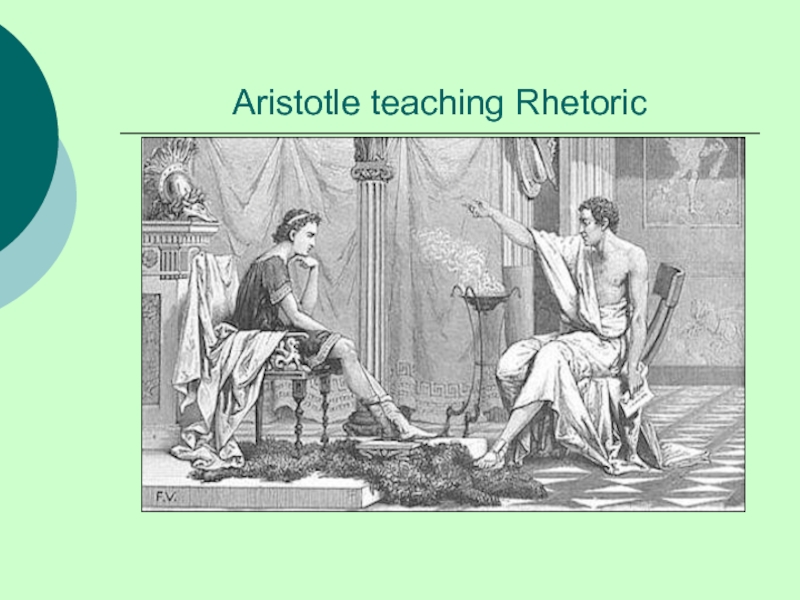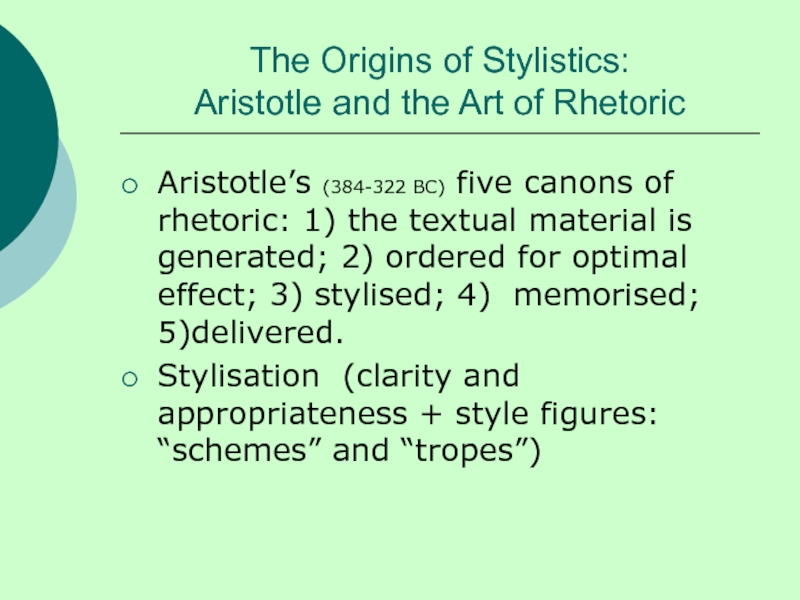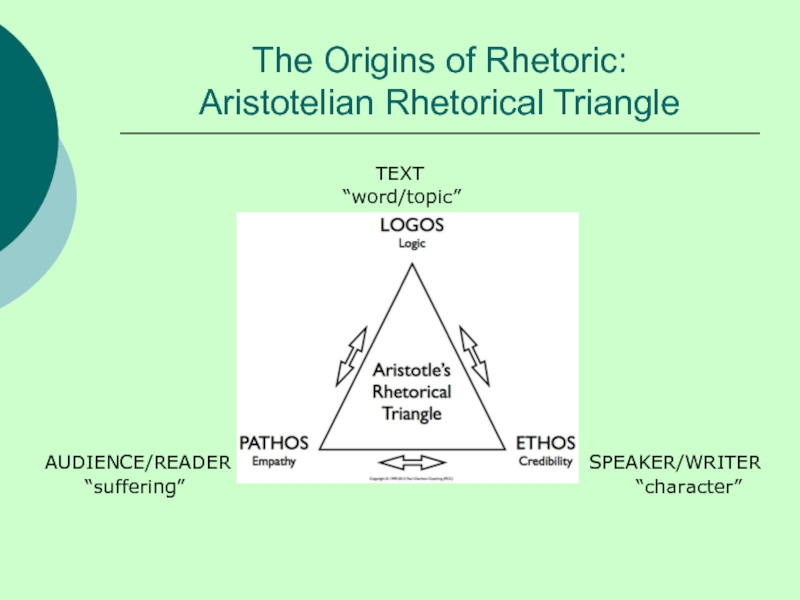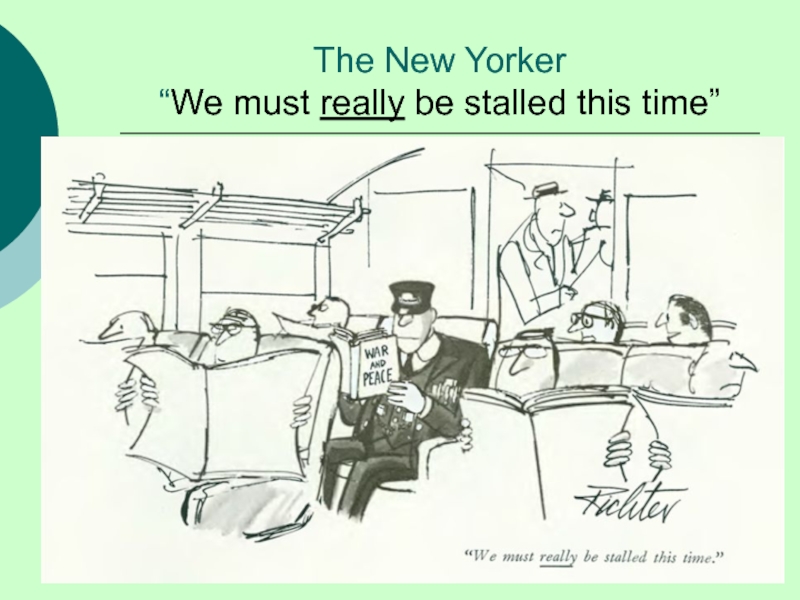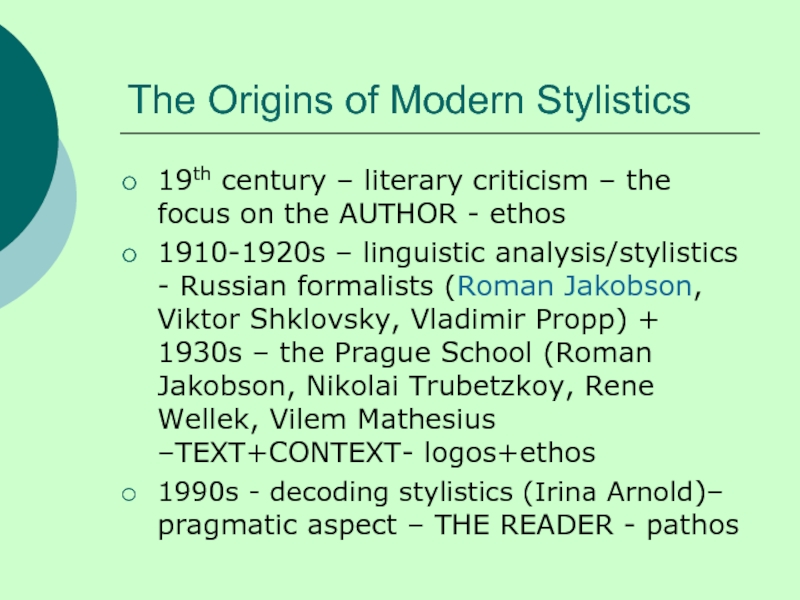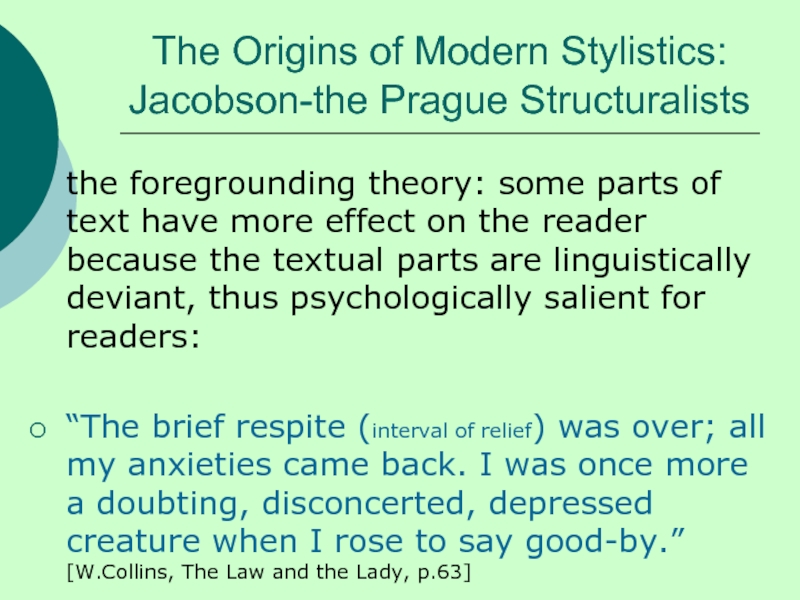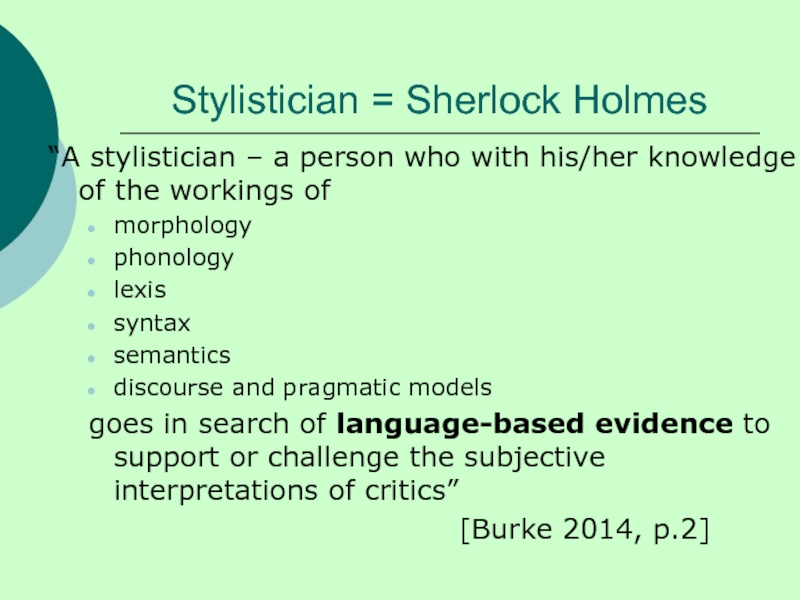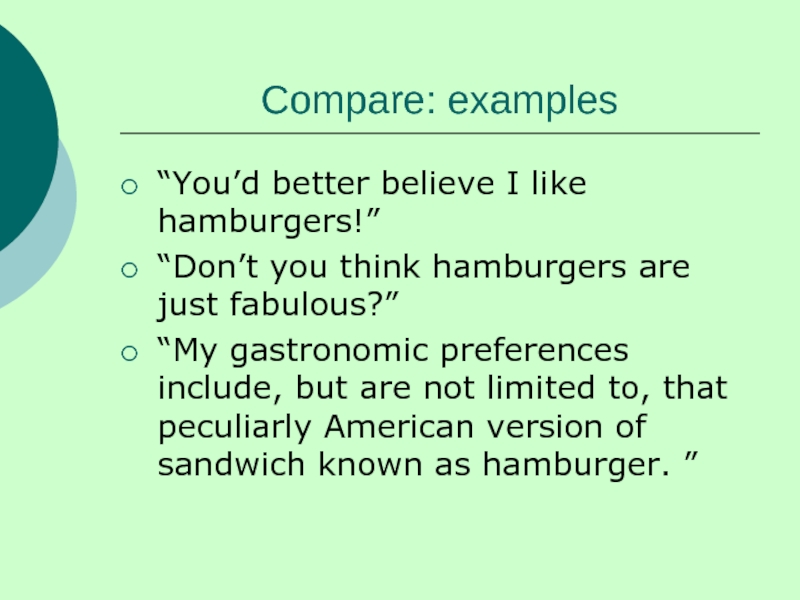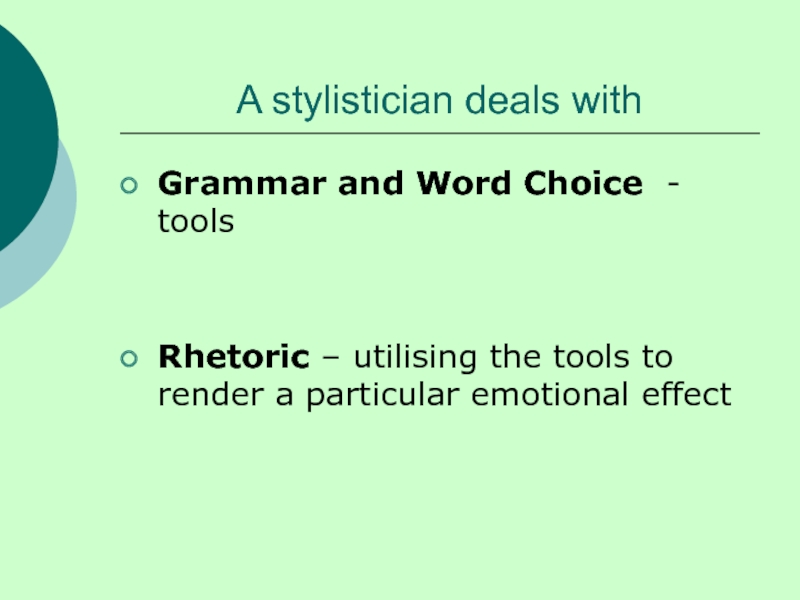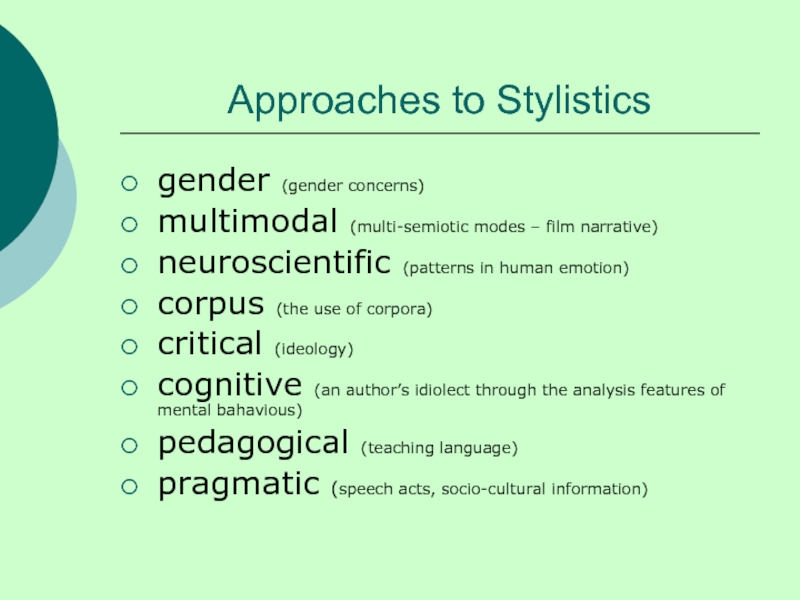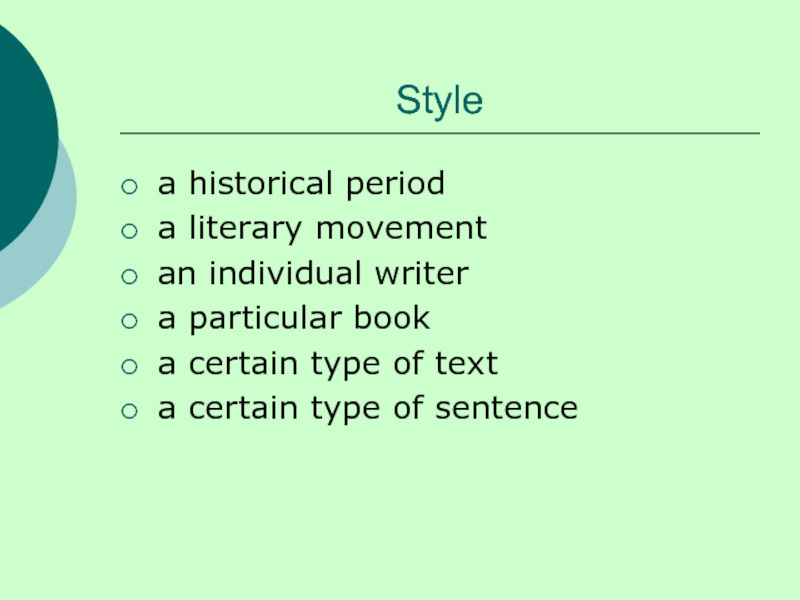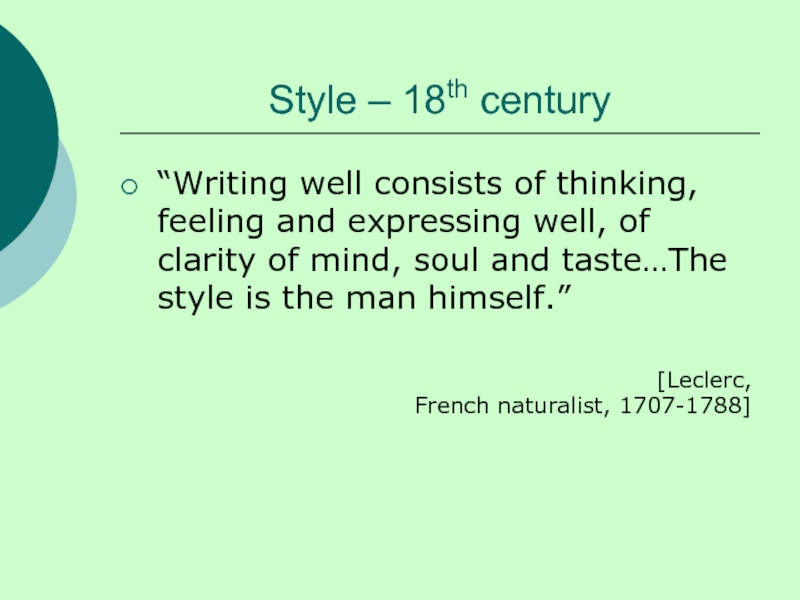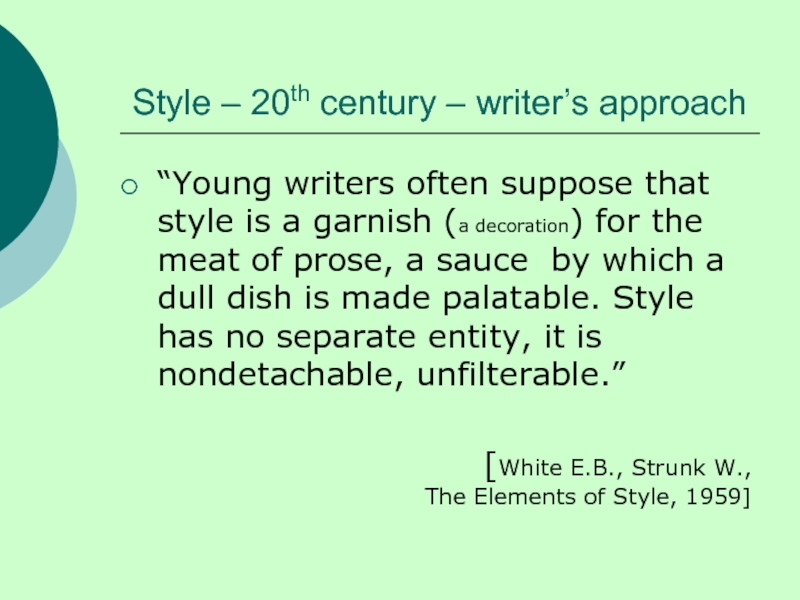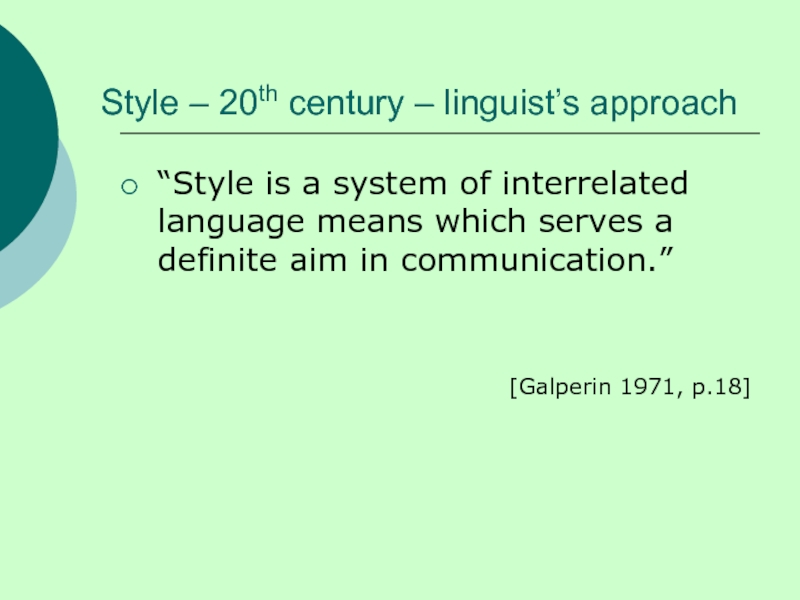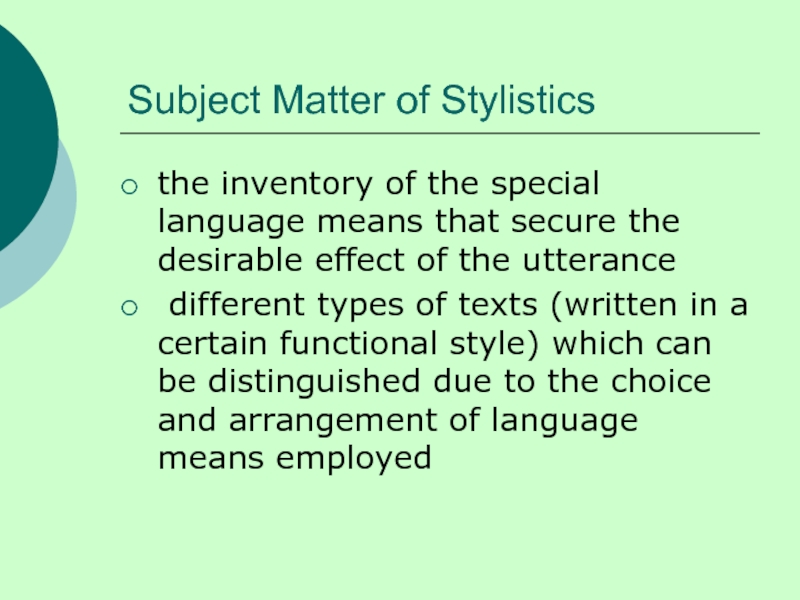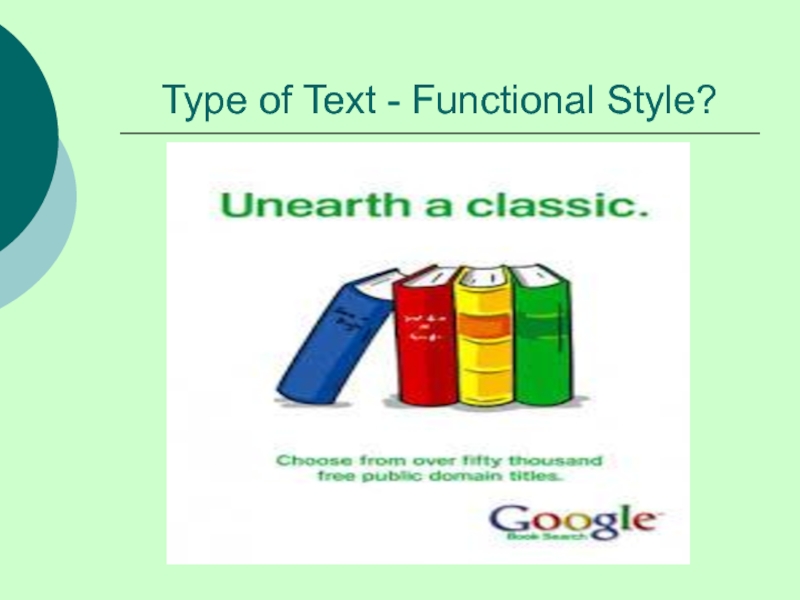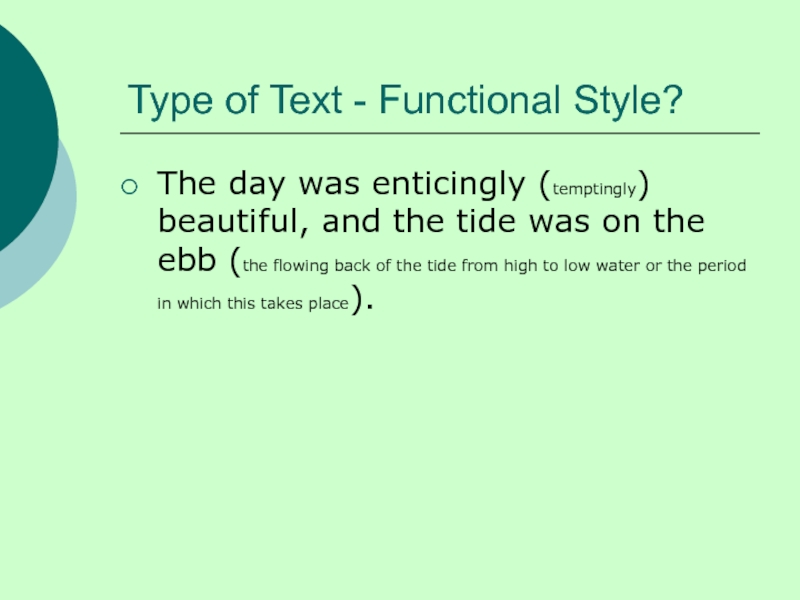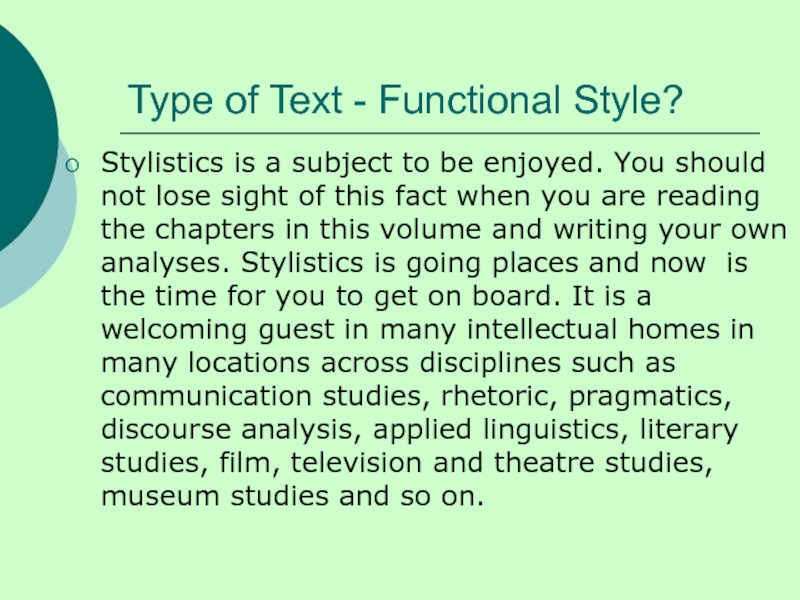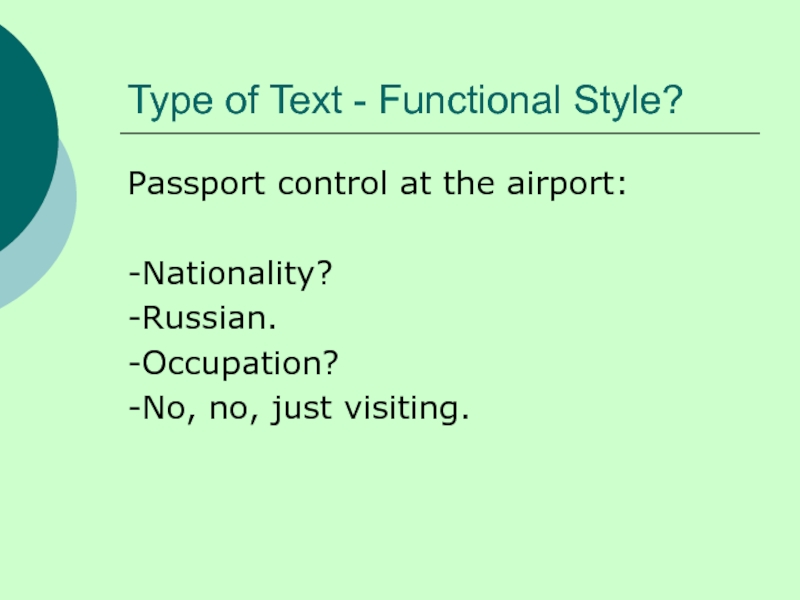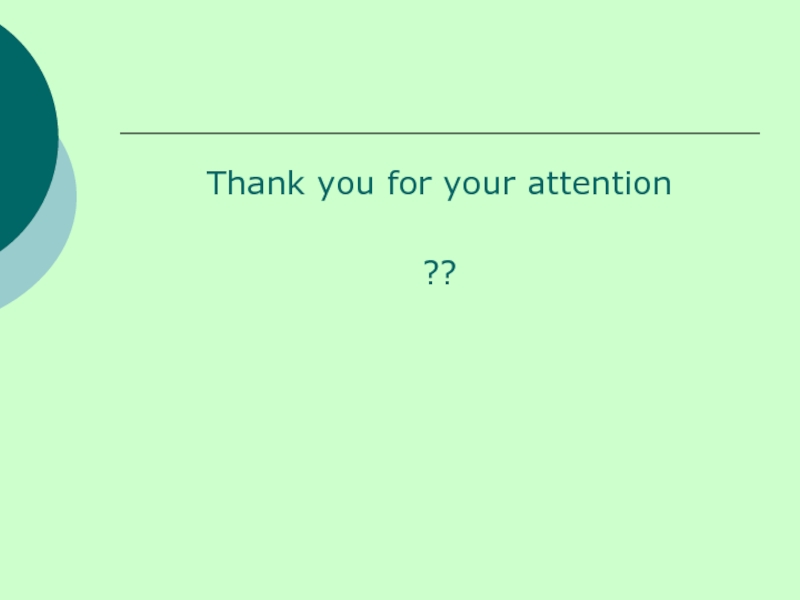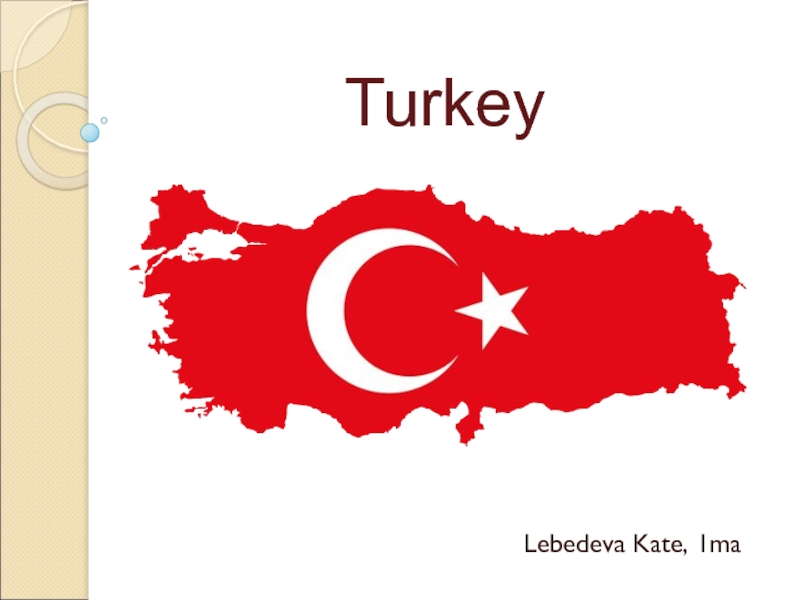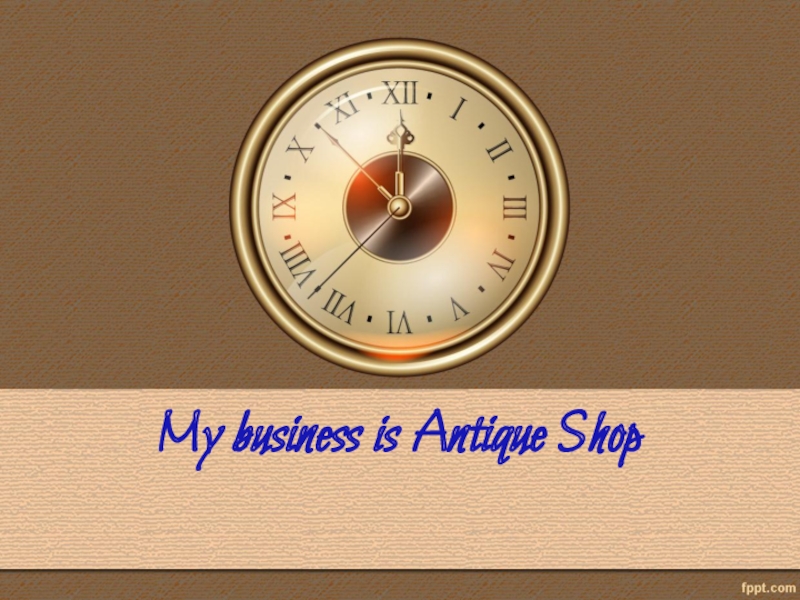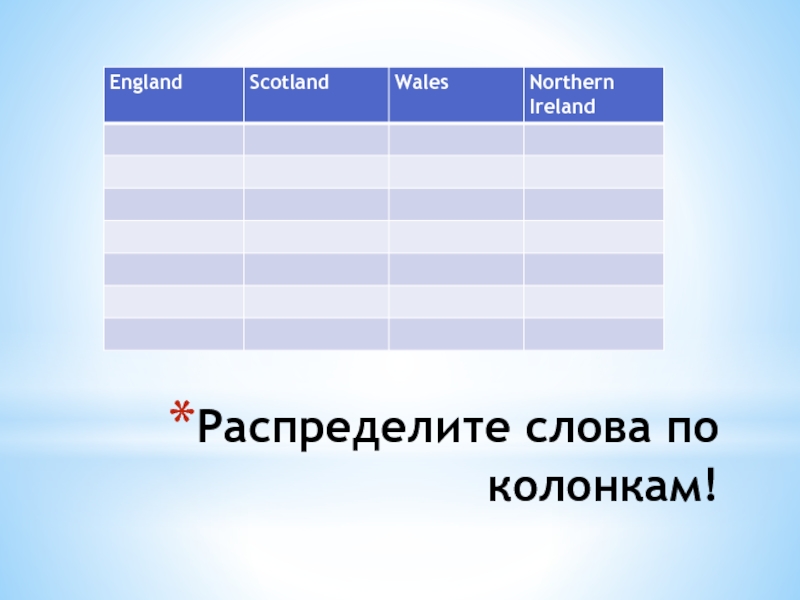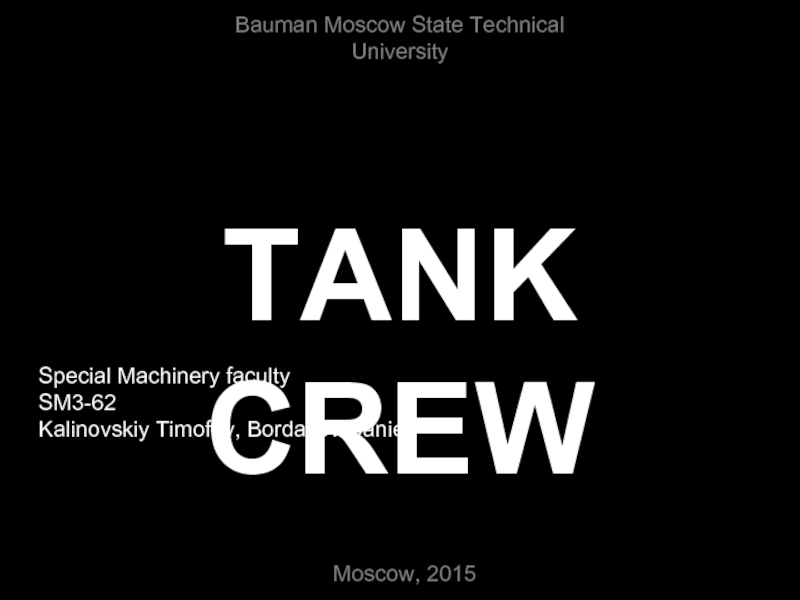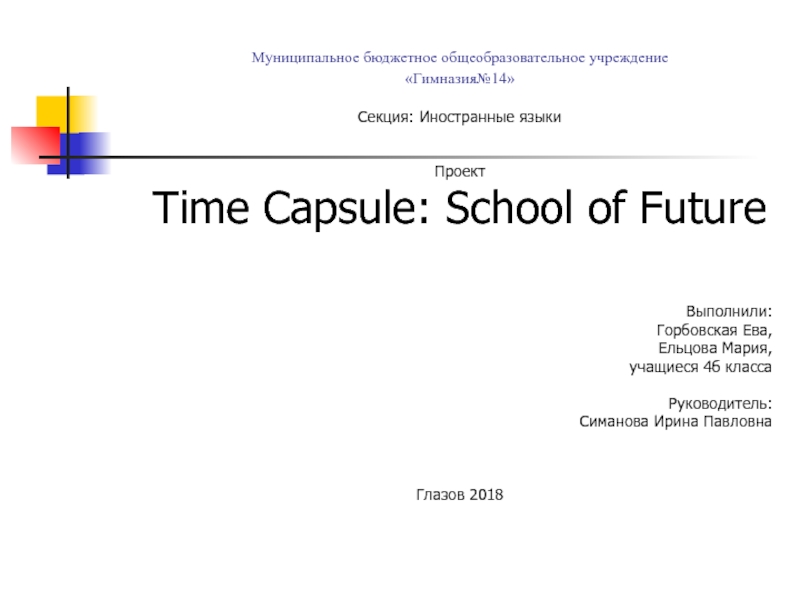- Главная
- Разное
- Дизайн
- Бизнес и предпринимательство
- Аналитика
- Образование
- Развлечения
- Красота и здоровье
- Финансы
- Государство
- Путешествия
- Спорт
- Недвижимость
- Армия
- Графика
- Культурология
- Еда и кулинария
- Лингвистика
- Английский язык
- Астрономия
- Алгебра
- Биология
- География
- Детские презентации
- Информатика
- История
- Литература
- Маркетинг
- Математика
- Медицина
- Менеджмент
- Музыка
- МХК
- Немецкий язык
- ОБЖ
- Обществознание
- Окружающий мир
- Педагогика
- Русский язык
- Технология
- Физика
- Философия
- Химия
- Шаблоны, картинки для презентаций
- Экология
- Экономика
- Юриспруденция
Stylistics of the English Language. Theoretical Framework презентация
Содержание
- 1. Stylistics of the English Language. Theoretical Framework
- 2. Theoretical Framework Galperin, J.R., Stylistics. Moscow, 1981.
- 3. Outline The origins of stylistics: Aristotle
- 4. The Origins of Stylistics The rhetoric of
- 5. Aristotle teaching Rhetoric
- 6. The Origins of Stylistics: Aristotle and
- 7. The Origins of Rhetoric: Aristotelian Rhetorical Triangle
- 8. The New Yorker “We must really be
- 9. The Origins of Modern Stylistics 19th century
- 10. The Origins of Modern Stylistics: Jacobson-the Prague
- 11. Stylistician = Sherlock Holmes “A stylistician –
- 12. Compare: examples “You’d better believe I like
- 13. A stylistician deals with Grammar and Word
- 14. Approaches to Stylistics gender (gender concerns) multimodal
- 15. Style a historical period a literary movement
- 16. Style – 18th century “Writing well consists
- 17. Style – 20th century – writer’s approach
- 18. Style – 20th century – linguist’s approach
- 19. Subject Matter of Stylistics the inventory of
- 20. Type of Text - Functional Style?
- 21. Type of Text - Functional Style? The
- 22. Type of Text - Functional Style? Stylistics
- 23. Type of Text - Functional Style? Passport
- 24. Thank you for your attention ??
Слайд 1Stylistics of the English Language
Koroteeva
Valentina Vladimirovna,
valentina.shilova77@gmail.com
Слайд 2Theoretical Framework
Galperin, J.R., Stylistics. Moscow, 1981.
Kukharenko, V.A., A Book of Practice
in Stylistics. Moscow, 1986.
Shakhhovsky, V.I., English Stylistics. M.: URSS. 2013. 232 p.
Skrebnev, Y.M., Fundamentals of English Stylistics. Moscow, 1994.
Znamenskaya T.A., Stylistics of the English Language. Moscow, 2005.
Арнольд И.В., Стилистика. Современный английский язык. М., 2002.
Гальперин И.Р., Текст как объект лингвистического исследования. М.,1981.
Кухаренко В. А. Интерпретация текста. М., 1988.
Landon, Brooks, Building Great Sentences: Exploring the Writer’s Craft. Chantilly, VA : The Teaching Company, 2008.
Leech, G., Short, M., Style in Fiction: A Linguistic Introduction to English Fictional Prose. Second Edition. Edinburgh: Pearson Education Limited. 2007.
The Routledge Handbook of Stylistics. Edited by Michael Burke. London and New York, Routledge, 2014.
Wright, Laura, and Hope, Jonathan, Stylistics. A practical Coursebook. London and New York, Routledge, 2005.
Shakhhovsky, V.I., English Stylistics. M.: URSS. 2013. 232 p.
Skrebnev, Y.M., Fundamentals of English Stylistics. Moscow, 1994.
Znamenskaya T.A., Stylistics of the English Language. Moscow, 2005.
Арнольд И.В., Стилистика. Современный английский язык. М., 2002.
Гальперин И.Р., Текст как объект лингвистического исследования. М.,1981.
Кухаренко В. А. Интерпретация текста. М., 1988.
Landon, Brooks, Building Great Sentences: Exploring the Writer’s Craft. Chantilly, VA : The Teaching Company, 2008.
Leech, G., Short, M., Style in Fiction: A Linguistic Introduction to English Fictional Prose. Second Edition. Edinburgh: Pearson Education Limited. 2007.
The Routledge Handbook of Stylistics. Edited by Michael Burke. London and New York, Routledge, 2014.
Wright, Laura, and Hope, Jonathan, Stylistics. A practical Coursebook. London and New York, Routledge, 2005.
Слайд 3Outline
The origins of stylistics: Aristotle
The origins of modern stylistics
Definition of style
Subject
matter of stylistics
Слайд 4The Origins of Stylistics
The rhetoric of the ancient classical world: Aristotle
and Plato
Three kinds of style:
the high, florid style
the low style
the middle style
Three kinds of style:
the high, florid style
the low style
the middle style
Слайд 6The Origins of Stylistics:
Aristotle and the Art of Rhetoric
Aristotle’s (384-322
BC) five canons of rhetoric: 1) the textual material is generated; 2) ordered for optimal effect; 3) stylised; 4) memorised; 5)delivered.
Stylisation (clarity and appropriateness + style figures: “schemes” and “tropes”)
Stylisation (clarity and appropriateness + style figures: “schemes” and “tropes”)
Слайд 7The Origins of Rhetoric:
Aristotelian Rhetorical Triangle
TEXT
“word/topic”
AUDIENCE/READER SPEAKER/WRITER
“suffering” “character”
“word/topic”
AUDIENCE/READER SPEAKER/WRITER
“suffering” “character”
Слайд 9The Origins of Modern Stylistics
19th century – literary criticism – the
focus on the AUTHOR - ethos
1910-1920s – linguistic analysis/stylistics - Russian formalists (Roman Jakobson, Viktor Shklovsky, Vladimir Propp) + 1930s – the Prague School (Roman Jakobson, Nikolai Trubetzkoy, Rene Wellek, Vilem Mathesius –TEXT+CONTEXT- logos+ethos
1990s - decoding stylistics (Irina Arnold)– pragmatic aspect – THE READER - pathos
1910-1920s – linguistic analysis/stylistics - Russian formalists (Roman Jakobson, Viktor Shklovsky, Vladimir Propp) + 1930s – the Prague School (Roman Jakobson, Nikolai Trubetzkoy, Rene Wellek, Vilem Mathesius –TEXT+CONTEXT- logos+ethos
1990s - decoding stylistics (Irina Arnold)– pragmatic aspect – THE READER - pathos
Слайд 10The Origins of Modern Stylistics:
Jacobson-the Prague Structuralists
the foregrounding theory: some
parts of text have more effect on the reader because the textual parts are linguistically deviant, thus psychologically salient for readers:
“The brief respite (interval of relief) was over; all my anxieties came back. I was once more a doubting, disconcerted, depressed creature when I rose to say good-by.” [W.Collins, The Law and the Lady, p.63]
“The brief respite (interval of relief) was over; all my anxieties came back. I was once more a doubting, disconcerted, depressed creature when I rose to say good-by.” [W.Collins, The Law and the Lady, p.63]
Слайд 11Stylistician = Sherlock Holmes
“A stylistician – a person who with his/her
knowledge of the workings of
morphology
phonology
lexis
syntax
semantics
discourse and pragmatic models
goes in search of language-based evidence to support or challenge the subjective interpretations of critics”
[Burke 2014, p.2]
morphology
phonology
lexis
syntax
semantics
discourse and pragmatic models
goes in search of language-based evidence to support or challenge the subjective interpretations of critics”
[Burke 2014, p.2]
Слайд 12Compare: examples
“You’d better believe I like hamburgers!”
“Don’t you think hamburgers are
just fabulous?”
“My gastronomic preferences include, but are not limited to, that peculiarly American version of sandwich known as hamburger. ”
“My gastronomic preferences include, but are not limited to, that peculiarly American version of sandwich known as hamburger. ”
Слайд 13A stylistician deals with
Grammar and Word Choice - tools
Rhetoric – utilising
the tools to render a particular emotional effect
Слайд 14Approaches to Stylistics
gender (gender concerns)
multimodal (multi-semiotic modes – film narrative)
neuroscientific (patterns
in human emotion)
corpus (the use of corpora)
critical (ideology)
cognitive (an author’s idiolect through the analysis features of mental bahavious)
pedagogical (teaching language)
pragmatic (speech acts, socio-cultural information)
corpus (the use of corpora)
critical (ideology)
cognitive (an author’s idiolect through the analysis features of mental bahavious)
pedagogical (teaching language)
pragmatic (speech acts, socio-cultural information)
Слайд 15Style
a historical period
a literary movement
an individual writer
a particular book
a certain type
of text
a certain type of sentence
a certain type of sentence
Слайд 16Style – 18th century
“Writing well consists of thinking, feeling and expressing
well, of clarity of mind, soul and taste…The style is the man himself.”
[Leclerc, French naturalist, 1707-1788]
[Leclerc, French naturalist, 1707-1788]
Слайд 17Style – 20th century – writer’s approach
“Young writers often suppose that
style is a garnish (a decoration) for the meat of prose, a sauce by which a dull dish is made palatable. Style has no separate entity, it is nondetachable, unfilterable.”
[White E.B., Strunk W., The Elements of Style, 1959]
[White E.B., Strunk W., The Elements of Style, 1959]
Слайд 18Style – 20th century – linguist’s approach
“Style is a system of
interrelated language means which serves a definite aim in communication.”
[Galperin 1971, p.18]
[Galperin 1971, p.18]
Слайд 19Subject Matter of Stylistics
the inventory of the special language means that
secure the desirable effect of the utterance
different types of texts (written in a certain functional style) which can be distinguished due to the choice and arrangement of language means employed
different types of texts (written in a certain functional style) which can be distinguished due to the choice and arrangement of language means employed
Слайд 21Type of Text - Functional Style?
The day was enticingly (temptingly) beautiful,
and the tide was on the ebb (the flowing back of the tide from high to low water or the period in which this takes place).
Слайд 22Type of Text - Functional Style?
Stylistics is a subject to be
enjoyed. You should not lose sight of this fact when you are reading the chapters in this volume and writing your own analyses. Stylistics is going places and now is the time for you to get on board. It is a welcoming guest in many intellectual homes in many locations across disciplines such as communication studies, rhetoric, pragmatics, discourse analysis, applied linguistics, literary studies, film, television and theatre studies, museum studies and so on.
Слайд 23Type of Text - Functional Style?
Passport control at the airport:
-Nationality?
-Russian.
-Occupation?
-No, no,
just visiting.
